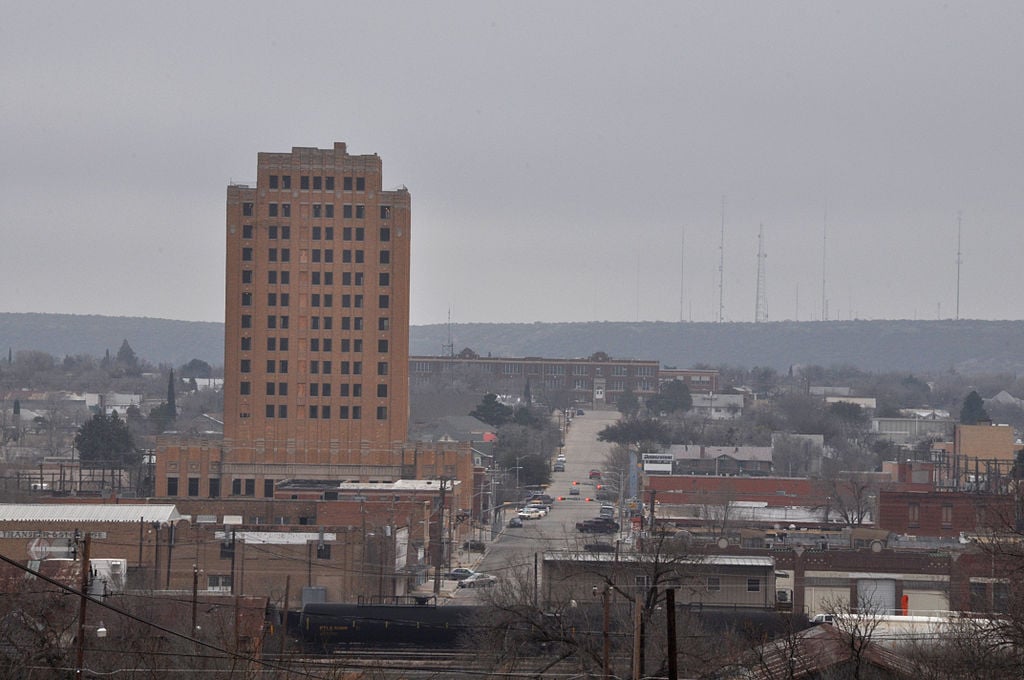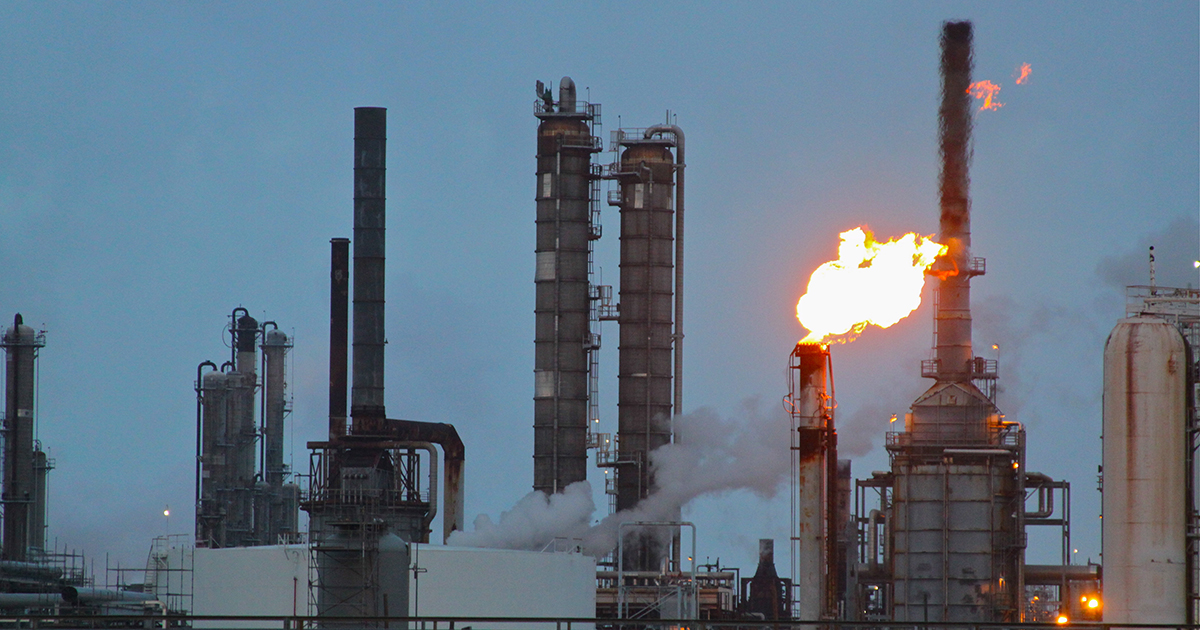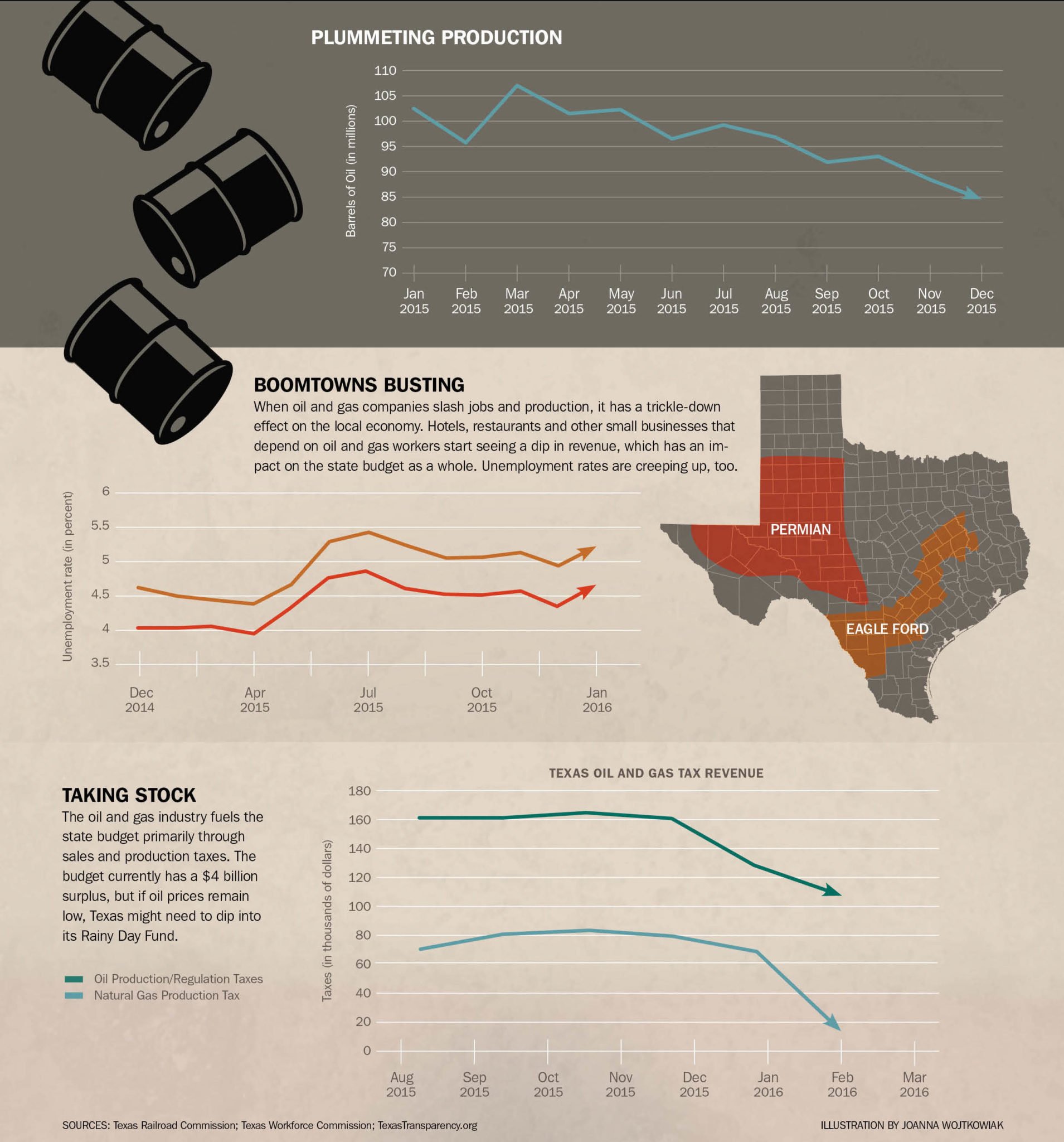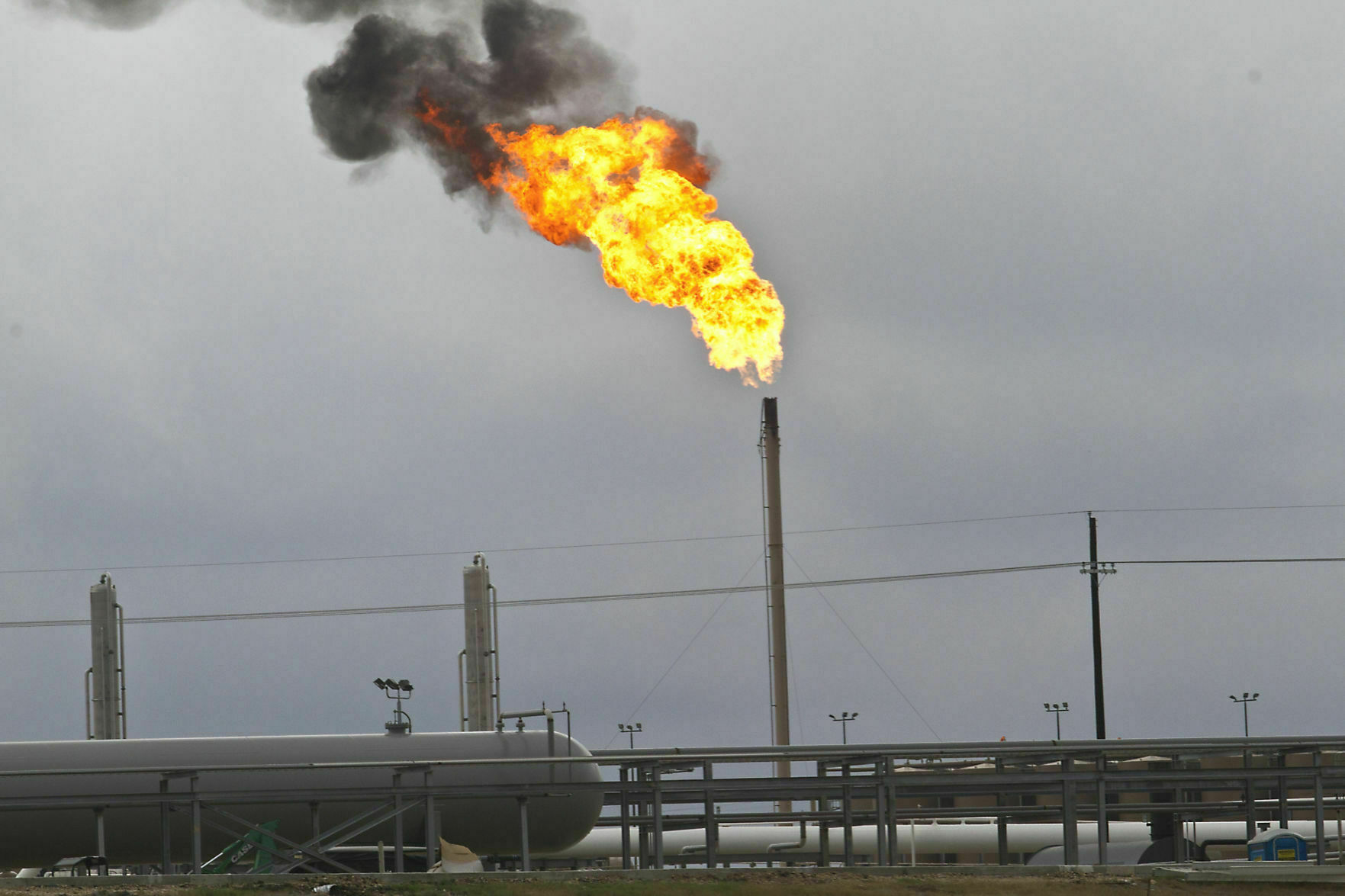
A New Study Finds a Link Between Flaring and an Increase in Premature Births
In the Eagle Ford Shale, a study found that pregnant, Latina women were more likely than white women to give birth prematurely.

Above: Flaring at an oil processing plant outside Cuero.
When the fracking boom came to the Eagle Ford Shale, it brought billions of dollars of investment and tax revenue to the rural, sparsely populated swath of South Texas that stretches from the borderlands near Laredo to the northeast toward College Station. In 2015, at the height of the boom, the Eagle Ford was producing more than a million barrels of oil a day. At night, satellite imagery showed rural counties lit up like cities from flaring, the burning of natural gas at well heads.
But last month, a new study found that those flares were directly linked to an increase in preterm births in South Texas. Pregnant women exposed to more than 10 nightly flares within three miles of their home had a higher risk of giving birth prematurely. Premature babies can have weak hearts and lungs when they’re born, and they are more likely to develop chronic health issues later in life. Notably, the study found that trend was exclusive to Hispanic women, who had a higher exposure to flaring than any other demographic in the region.
The finding itself is noteworthy, but it’s also one of the rare long term public health studies conducted in the region. “In general, there’s a gap in epidemiology in rural areas,” Jill Johnston, one of the study’s authors, says. “You have to understand the scope of the pollution, and where it’s happening, to link it to an outcome.” That’s already difficult in such a geographically sprawling area, but on top of that, the Eagle Ford also lacks extensive air monitoring to detect the levels of harmful chemicals to begin with.
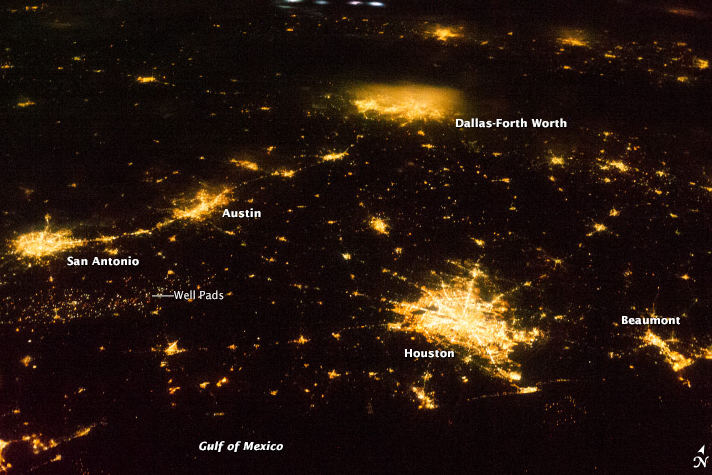
Flaring releases methane, a powerful greenhouse gas, as well as volatile organic compounds, one of ingredients of smog, which irritate the lungs and nervous system. The practice also releases carcinogens like benzene and formaldehyde; nitrogen oxides, which can cause chronic lung issues; and sour-smelling hydrogen sulfide, which causes nausea, dizziness, and headaches.
While the state’s Railroad Commission approves permits for oil and gas drilling and flaring, the Texas Commission on Environmental Quality (TCEQ) is tasked with monitoring the emissions from those wells. Across the entire Eagle Ford Shale, which is roughly the size of Delaware, TCEQ maintains seven air monitors—the same number of monitors set up in the city of Dallas, which is a fraction of the size. A handful of the Eagle Ford’s monitors are clustered around large cities like Laredo, measuring particulate matter pollution commonly caused by cars and lighter industrial activity. Only two air monitors track pollutants released from flares: One in Karnes and one in Wilson counties.
“There are hundreds and hundreds of flares spread out, which cumulatively release several power plants’ worth of pollution,” says Ilan Levin, the associate director of the Austin-based Environmental Integrity Project. But because TCEQ considers each flare a “small source” of pollution, compared to a giant smokestack, there is hardly any regulatory scrutiny. “[The industry] flares with impunity,” he says. “Year in and year out, it’s been thousands of tons of dangerous pollutants.”
Because the TCEQ monitoring is so sparse, most of the emissions data available to researchers is industry-reported. For years, environmental researchers and advocates have raised concerns that these reports were underestimates. A 2018 study found that nationwide, methane emissions may be 60 percent higher than what was reported to the Environmental Protection Agency. In June, the Environmental Defense Fund found that one out of every ten flares in the Permian Basin is malfunctioning, meaning that far more pollution is released than reported. To complicate the matter, last week, the Trump administration gutted existing federal methane rules, which means there will be virtually no methane regulations in Texas anymore.
Rural areas in particular are overlooked when it comes to placing these air monitors. According to a TCEQ spokesperson, the agency uses population trends, as well as existing air emissions issues, to determine where to place air monitors—in other words, more people, more monitors. Dallas already has a “high profile” ozone issue, Levin says, and anything that could make the regional air quality drop below federal standards could lead to federal fines. That’s one reason that the Barnett Shale, which sits under the Dallas-Fort Worth metroplex, has a far more extensive monitoring system in place, even though the region produces far less oil and gas than the Eagle Ford.
“People in the Eagle Ford and Permian are more hesitant to complain to the state. They don’t fight back like they do in the Barnett,” says Sharon Wilson of the environmental organization Earthworks. In 2014, residents of Denton approved a fracking ban in the city, which was ultimately overturned by the state. Wilson, a North Texas resident, was active in that fight. Since then, she’s been working to document dangerous emissions in the Permian Basin. She’s even helped at least one elderly couple move out of their ranch, after high levels of flaring nearby caused the couple to experience a host of health issues. “We have to keep proving that breathing hydrocarbons and putting this crap next to people is harmful,” she says. “But we have documents from the American Petroleum Institute in 1948, [showing] they found that there is no acceptable exposure level to benzene.”
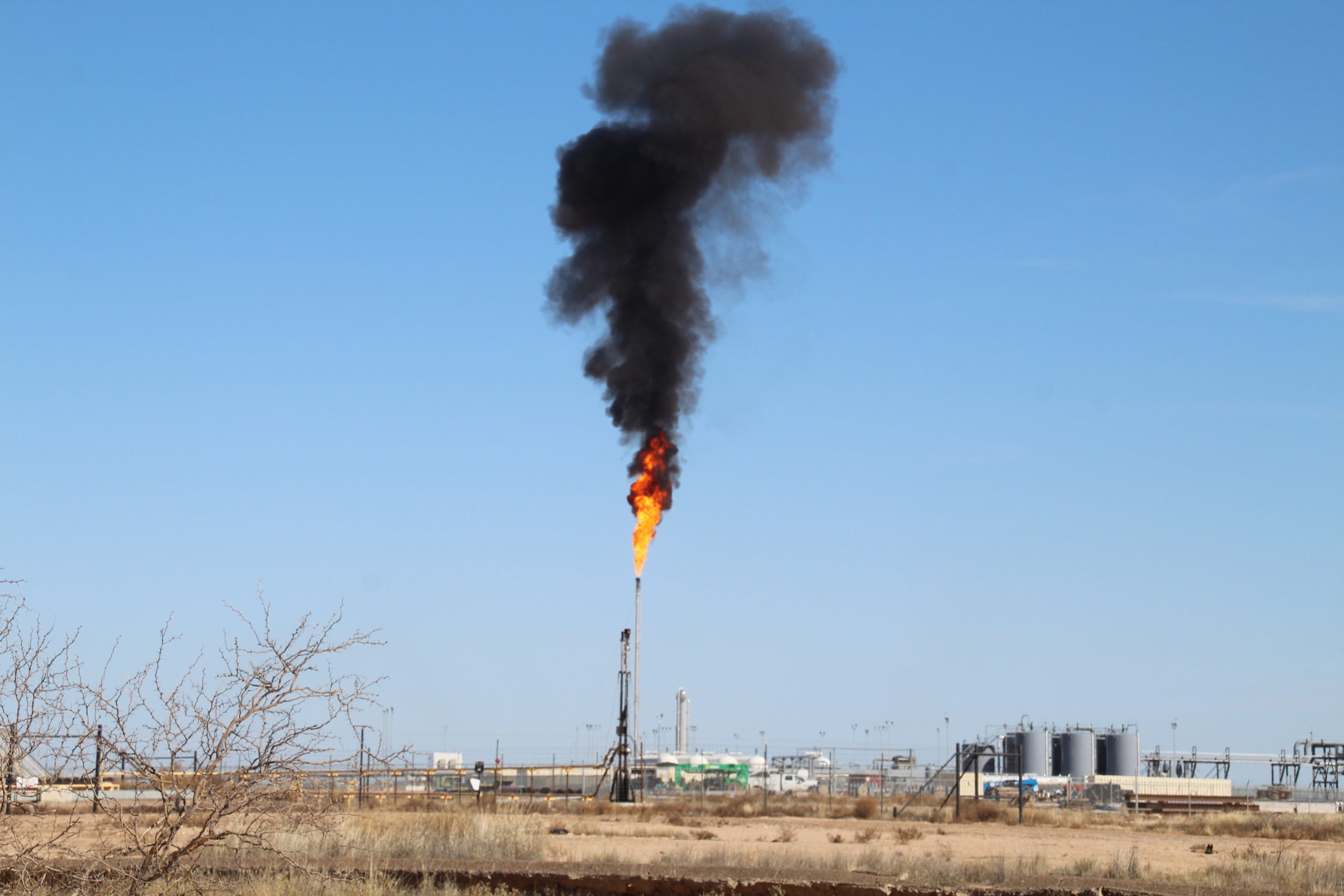
Without robust air quality monitoring in regions like the Permian Basin and the Eagle Ford, it’s difficult to tie specific industrial activities to specific health outcomes. Johnston and her colleagues used satellite data to count nightly flares near residential homes instead of relying on questionable self-reported emissions data from the industry. The Texas Oil and Gas Association, a major lobbying group, has already tried to discredit the most recent study because researchers could not pinpoint air quality data. Todd Staples, the association’s president, said in a statement that the researchers used “proximity as a surrogate for exposure,” and that the study’s claims were “unsubstantiated.”
While it’s notoriously difficult to carry out public health studies like this one, its findings are in line with the vast majority of peer reviewed research on the health effects of fracking near residential areas. If anything, some environmentalists say the newest study is proof that more research on the topic is needed.
“There’s a huge gap between what we think we know and what’s being measured,” says Virginia Palacios, a clean air consultant with the environmental organization Green Latinos. “It’s been easy for people to look away from this, not knowing the impacts.” The study is also one of the first public health studies showing disproportionate environmental and health impacts on communities of color in the Eagle Ford.
In denser, urban areas like the Houston Ship Channel, or coastal cities like Beaumont and Port Arthur, Black and Latinx communities have historically been segregated and redlined into the neighborhoods closest to oil refineries and petrochemical plants. It’s well documented that these communities have higher rates of asthma and cancer because of the proximity to industrial pollution.
But in the rural counties where that oil and gas is extracted, it’s less clear what the full extent of the health impacts are, let alone what’s causing racial discrepancies. While this most recent study found that pregnant Latina women lived closer to more flares than white women, the authors also controlled for a variety of factors, like access to health insurance and adequate prenatal care, that could have influenced the outcomes. Even with those socio-economic factors, the link between flaring and preterm births was significant.
“The troubling thing is, we have to be impacted before [state agencies] will do anything,” Palacios says. “But we shouldn’t need a zillion more studies before we proactively protect people.”
Read more from the Observer:
-
Texas Solar Hits a Turning Point: As the coronavirus pandemic devastates the state’s already flailing oil and gas industry, solar energy production is on a trajectory for record growth.
-
The Coronavirus Pipeline: U.S. deportations of migrants have exported COVID-19 to Guatemala and prompted fear, chaos, and a collapse of already fragile health services.
-
How Texas Women Delivered the Nineteenth Amendment: An upcoming documentary and book mark the suffrage centennial, focused on Texas contributions.
